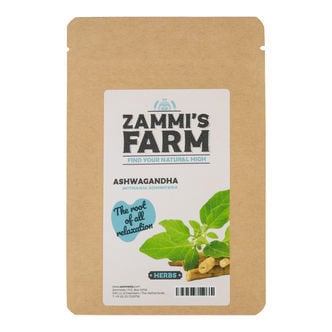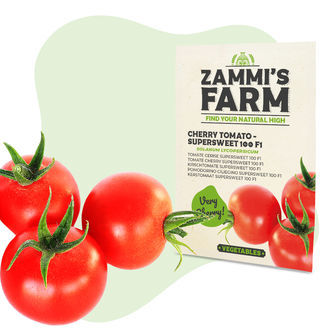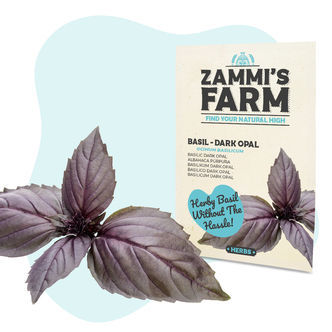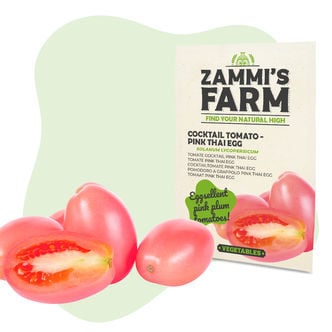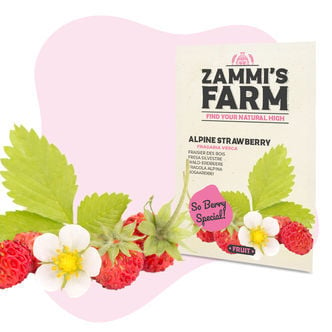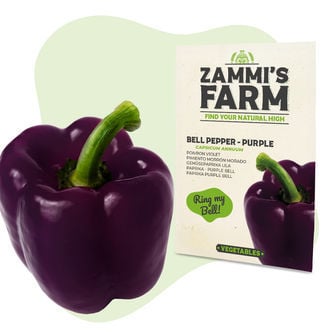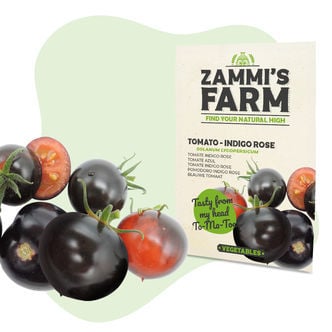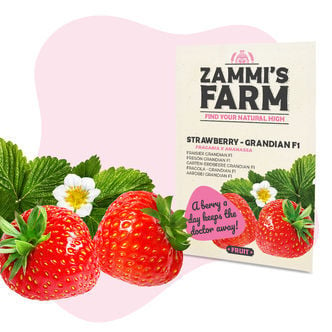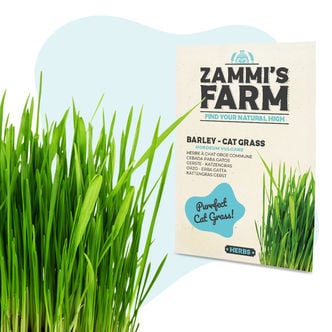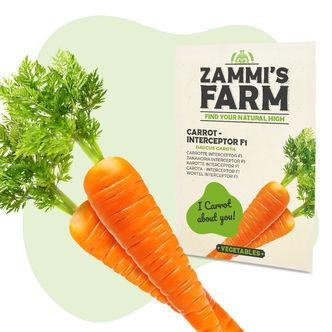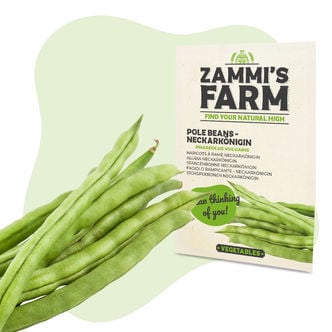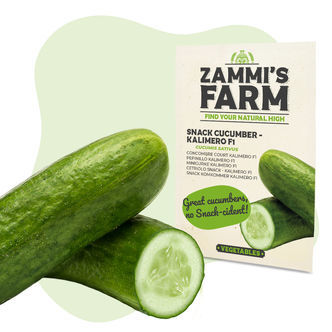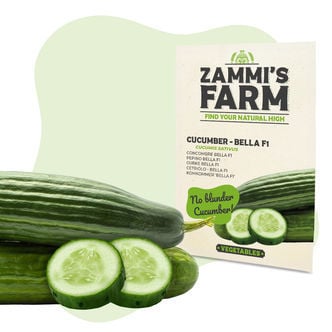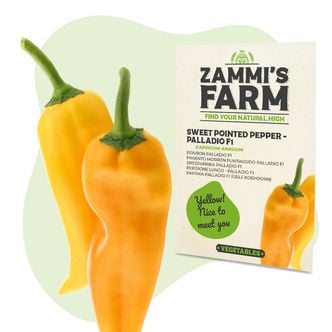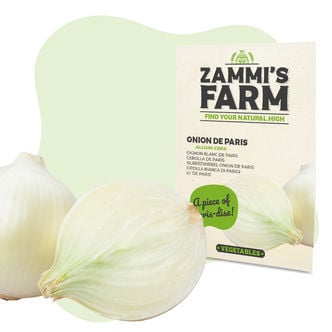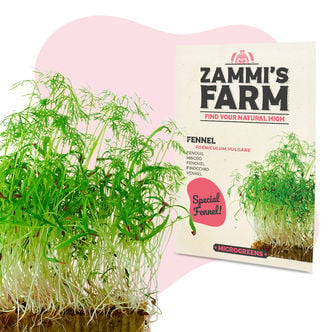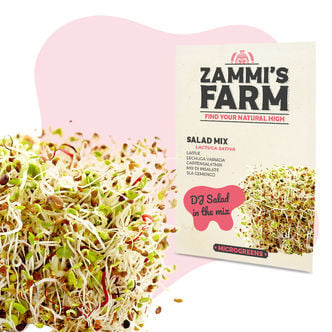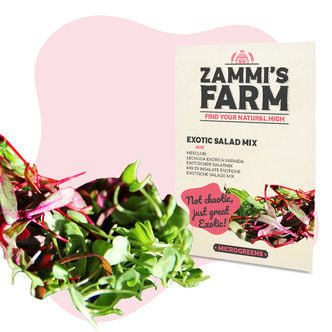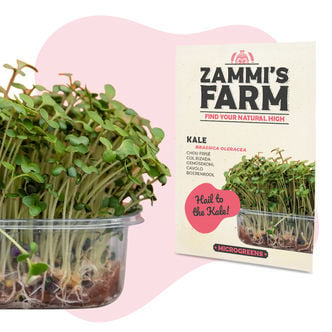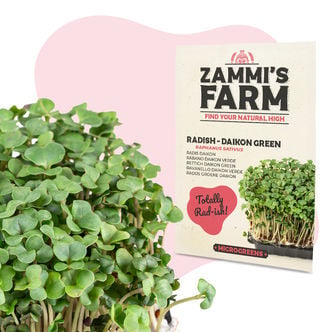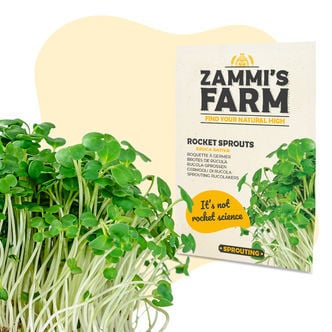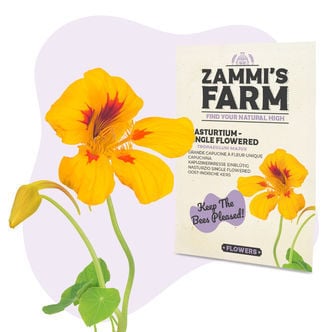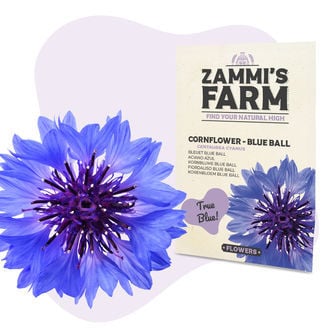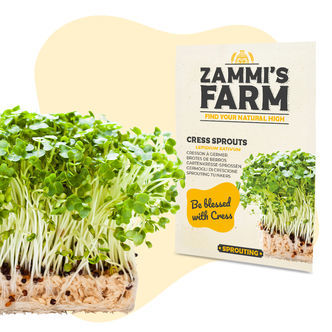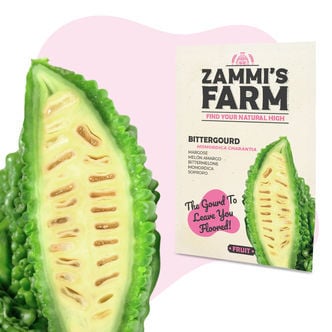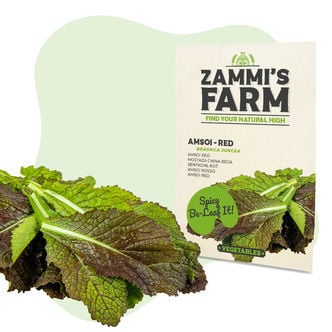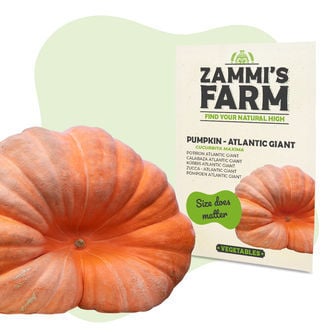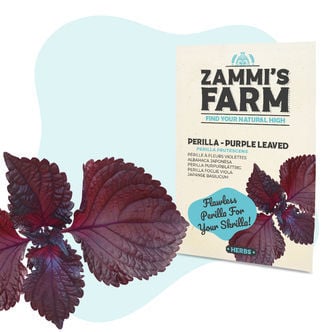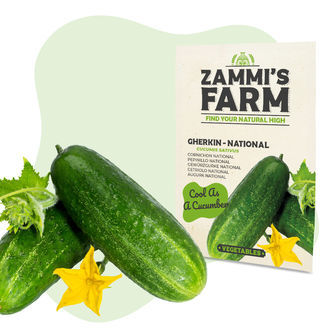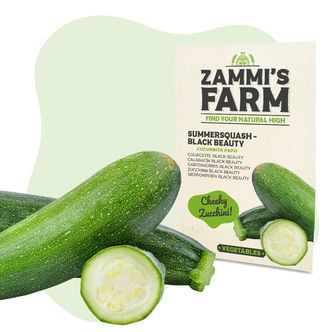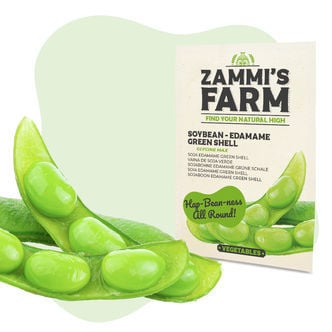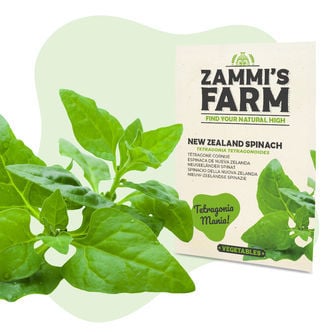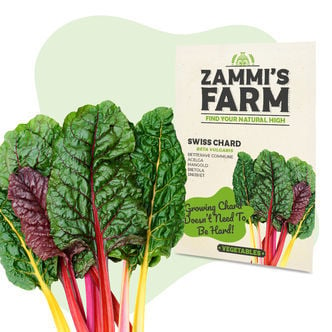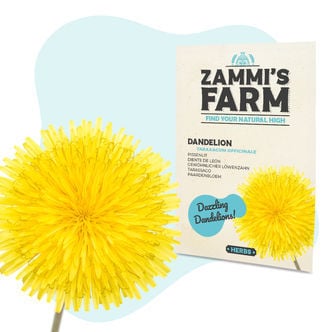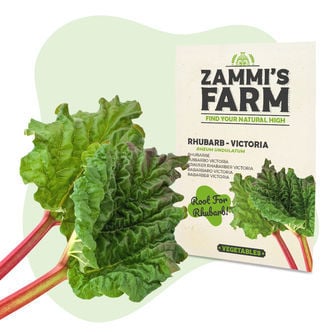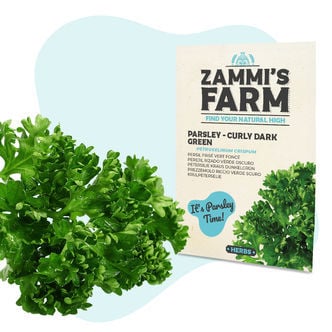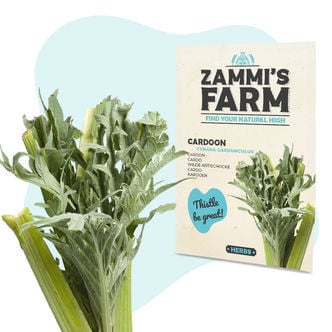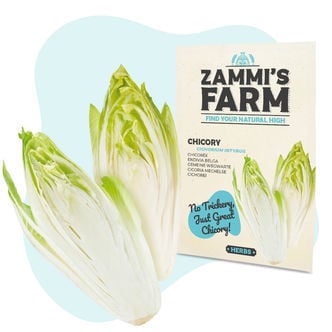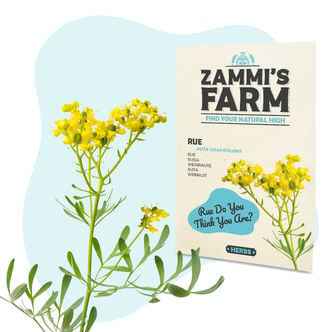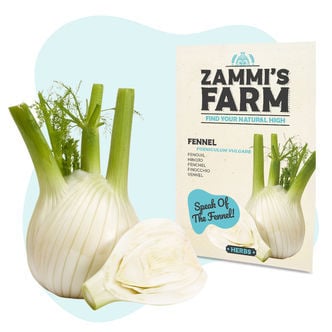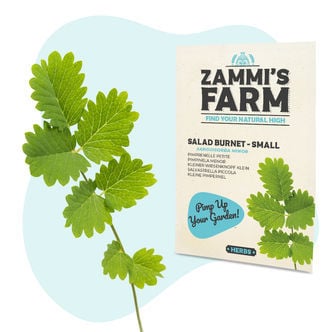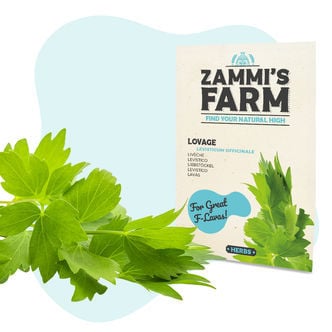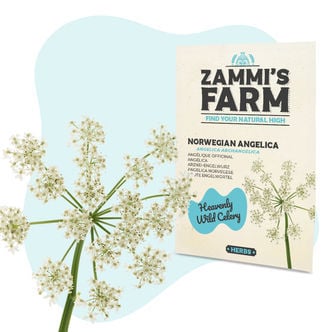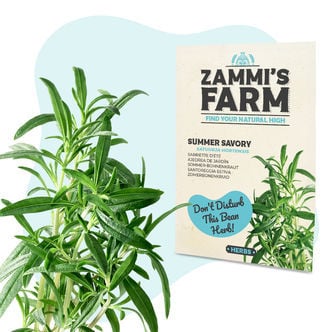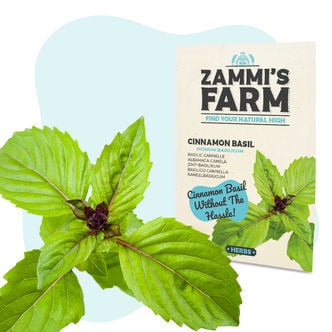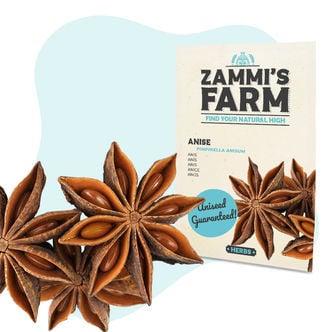Edible Plant Seeds
There are 116 products.From fruits and vegetables to herbs and spices—there's no shortage of edible plants you can grow at home. At Zamnesia, we now stock a wide variety of edible plant seeds for hobby gardeners and food farmers. From everyday favourites like Alpine Strawberries to unique cultivars like Dark Opal Basil and Lemon Apple Cucumbers, we consistently stock exciting edible plant varieties for your garden. Browse our selection below, and remember; Zamnesia edible plant seeds are specially selected for quality and maximum germination rates.
Ashwagandha (Withania somnifera) Seeds
Ashwagandha (Withania somnifera) is a shrub native to India, and it has been used for many years in the Ayurvedic tradition. Attractive and easy to cultivate, why not try growing it in your very own garden?
Cherry Tomato 'Supersweet 100 F1' (Solanum lycopersicum) Seeds
The Supersweet 100 cherry tomato hybrid is one of those plant hybrids that says it all in its name: these plants produce extremely sweet fruit and, in the right conditions, can grow into long vines capable of producing 100 or more tomatoes at once. Note that this is a tall tomato variety that needs full sun, support from stakes/trellises, plenty of care, and a lot of natural fertilizer to thrive.
Basil 'Dark Opal' (Ocimum basilicum) Seeds
Like normal basil, Dark Opal basil is best sown indoors. Keep your seedlings on a warm windowsill as they develop their roots and first leaves, then bring them outside in mid/late spring. Like most herbs, basil likes well-draining soil and partial shade/full sun, and is best watered sparingly (in the morning to give the roots time to dry). Use in a variety of cuisines and as a natural insecticide.
Cocktail Tomato 'Thai Pink Egg' (Solanum lycopersicum) Seeds
Thai Pink Egg Tomatoes originate from Thailand where they're treasured for their bright colour and deliciously sweet flesh. While they grow very similarly to other tomato (Solanum lycopersicum) varieties, Thai Pink Egg tomatoes like a little more water than usual, and hold up better in rainy climates as well as heat waves. Remember to prune and fertilize tomatoes regularly for bountiful harvests.
Alpine Strawberry (Fragaria vesca) Seeds
Alpine strawberry (Fragaria vesca) loves full sun or partial shade, though it's best to protect plants from the afternoon sun in hot climates. While Fragaria vesca can tolerate some shade, plants produce more fruit in bright, sunny locations. Grow Fragaria vesca in well-draining, fertile, and moist soil. Alpine strawberries have a strong flavour and can be enjoyed fresh or made into conserves.
Paprika Purple Bell (Capsicum annuum) Seeds
Add some vibrant violet colours to your garden! Paprika Purple Bell is the way to go. Get these seeds sown and started under glass between March and May, and you'll be greeted with a bevvy of purple peppers come summertime. Just house them in moist soil with a consistent temperature of around 20-25°C; you can't go wrong. With sweet flavours, they make the perfect addition to all kinds of dishes.
Indigo Rose Tomatoes (Solanum lycopersicum) Seeds
Indigo Rose is a heirloom tomato variety (Solanum lycopersicum) that produces stunning purple/black fruit. Like other tomato varieties, Indigo Rose is best grown in full sun and highly fertile soil, regularly pruned/pinched, and supported with stakes/towers/trellises. Harvest when the shade-facing side of the tomatoes are a soft pinkish-red colour and the sun-facing side a deep purple/black.
Grandian Strawberry F1 (Fragaria x ananassa) Seeds
Few things are as rewarding as picking your own strawberries. These Granadian F1 strawberries produce large, plump, and deliciously sweet fruits. Start them off early in a protected seedbed when temperatures reach 20°C and transplant them into large pots or an open field in early summer. Pick your berries when they're plump and red, and resow your seeds every year.
Barley - Cat Grass (Hordeum vulgare) Seeds
Barley - Cat Grass (Hordeum vulgare) Seeds are, as the name suggests, purrfect for your cat. It works as a digestive aid for them and may also prevent hairballs! The plant is effortless to grow and care for and can be sown between the months of April and September. Pick a light spot for them to flourish in, but ensure it doesn't get too much direct sunlight. This is one fast plant to grow!
Carrot - Interceptor F1 (Daucus carota) Seeds
These slimline carrots make for a healthy snack and have a sweet, satisfying taste. What's more, is that these seeds are effortless to cultivate and are unlikely to give even the most novice of growers a hard time. Sow these seeds directly into the ground and provide them with a little maintenance and upkeep and they'll deliver a bevvy of bright orange beauties come July-October. Perfect.
Pole Bean Neckarkönigin (Phaseolus vulgaris) Seeds
For an effortless growing project, look no further than Pole Bean Neckarkönigin (Phaseolus vulgaris). Sow these seeds directly into the ground in mid-May and let them do their thing. All it takes is a little maintenance, sunlight and moist soil, and this plant will perform. Able to produce plenty of veggies with very minimal effort makes Pole Bean an excellent choice for all growers.
Kalimero F1 Snack Cucumber (Cucumis sativus) Seeds
Whether pickled, as part of a salad or just a healthy treat, our Kalimero F1 Snack Cucumber is an incredibly simple veg to cultivate, not to mention extremely fast too! Get them going indoors around March and bring them outside for them to flourish over Summer. They're so quick to grow that you can actually get a few harvests from the same plant at the end of Summer. Versatile and accessible!
Cucumber Bella F1 (Cucumis sativus) Seeds
Bella F1 cucumber seeds (Cucumis sativus) produce long, sweet, and crisp fruit and are resistant to mildew. Start seeds outdoors in early-mid Spring and remember to water your plants generously while taking care not to wet their leaves (which attracts moulds and other pathogens). Use trellises to support the long vines and save space, and enjoy continuous harvest all throughout summer.
Sweet Pointed Pepper Palladio F1 (Capsicum annuum) Seeds
Get these bright yellow beauties going from mid-March, and give them plenty of light, sun and moist soil, and they'll flawlessly perform. These sweet and mild peppers will be ready come late Summer. They require very little in the way of maintenance and are extremely versatile. Whether you add them to salad, tacos or any other savoury dish, these yellow peppers are sure to brighten your plate.
Sweet Pointed Pepper Kapiya (Capsicum annuum) Seeds
Looking for something genuinely vibrant both in colour and flavour? Allow us to introduce the Sweet Pointed Pepper Kapiya. It's believed this pepper is originally from Bulgaria but has been used widely throughout Europe and the rest of the world. Sow these seeds in early Spring and repot as soon as the first leaves appear. Move the plants outside and let them flourish until October.
Onion de Paris (Allium cepa) Seeds
How do you get your hands on some great-tasting onions? Easy, simply sow these seeds in early Spring under glass and then move them outside in late April. This will give them plenty of time over the summer to mature and be ready for the picking! These onions are perfect for pickling or including as tiny veg on your plate or as part of a summer salad. The options are plentiful, and so is the yield!
Microgreens Fennel (Foeniculum vulgare) Seeds
Peppery, mild and sweet, Microgreens Fennel takes just 7-14 days to germinate and just another 2 weeks on top until the earliest greens are ready to harvest and use in a multitude of dishes. Just provide them with plenty of light and warmth and keep the surrounding soil moist, and you simply can't go wrong! This is one fast-to-grow plant that delivers in all areas. Get some in your home today!
Microgreens Salad Mix (Lactuca sativa) Seeds
With a selection of great greens available here, the vibrant Microgreens Salad Mix is ideal for adding to salads and can actually be grown all year round. Quick to flourish, sow the seeds when it works for you; just be sure to keep the soil moist but not waterlogged, and this plant will deliver delicious, moreish leaves and work perfectly in plenty of dishes. Ideal for all growers!
Microgreens Exotic Salad Mix - Seeds
Take your salad game to the new level with Exotic Salad Mix. It's really easy, just scatter the seeds on top of the soil and press gently. Cover with a thin layer of soil and spray with water. Use the mister once or twice a day to keep soil most. Harvest after 2–3 weeks, when you see the first set of true leaves. Microgreens thrive in sunny environments, think windowsills or balconies.
Microgreens Kale (Brassica oleracea) Seeds
Kale (Brassica oleracea) is in the spotlight for being one of the most nutritious greens on the market. But did you know that kale sprouts are even more packed with nutrients than fully mature kale plants? Sow kale seeds in a propagator at high density, and harvest your sprouts after 7–10 days for a fresh, delicious, and highly nutritious microgreen.
Microgreens Radish - Daikon Green (Raphanus sativus) Seeds
Green Daikon Radish is delicious and highly nutritious, used typically as a garnish in Japanese cuisine. Daikon Green Microgreens, however, are just as packed with flavor yet with much higher nutrient density. To grow them, simply sow seeds at a high density in a propagator and harvest the sprouts after roughly 1 week. With a fresh, tangy flavour, they go great in fresh and cooked Asian dishes.
Rocket Sprouts (Eruca sativa) Seeds
The peppery leaves of Rocket Sprouts make for the ideal addition to a wide variety of dishes; what's more, is that the path to this tasty produce is an extremely easy one, regardless of your prior expertise! Rocket Sprouts can be grown in indoor, outside, and greenhouse settings and require very little in the way of maintenance. Sow seeds in early Spring and enjoy great flavours come Summer.
Nasturtium 'Single Flowered' (Tropaeolum majus) Seeds
Boasting deep red, orange, and yellow hues, nasturtium flowers are surrounded by rich green leaves, making for a visually appealing plant. Able to reach heights of around 3m, this climbing plant is ideal for walled gardens and spacious areas. Not only boasting great looks, the flowers are also edible, making a vibrant addition to various dishes.
Cornflower 'Blue Ball' (Centaurea cyanus) Seeds
The Blue Ball cornflower is a great-looking flower that's ideal for a whole host of gardening set-ups. Sow the seeds directly into the ground in a place of your choosing in late spring, and they'll mostly take care of themselves throughout the summer. Without much needed in the way of maintenance, these flowers undoubtedly appeal to all levels of expertise. Colourful and vibrant, perfect for all.
Cress Sprouts (Lepidium sativum) Seeds
Cress Sprouts make for an easygoing and hugely rewarding growing project. Whether situated on a windowsill or as part of your garden, it'll perform with very little maintenance required. This is a fast-growing plant that can be sown and grown all year round. Just be sure to provide temperatures of around 20-22°C and a little upkeep, and you can enjoy tasty cress rich in vitamins A, B and C.
Bitter Gourd (Momordica charantia) Seeds
The bitter gourd, otherwise known as bitter melon or balsam pear, is a fruit that originally comes from Africa and Asia. However, now you can grow it right at home! Start it off in a greenhouse or indoors for 4 weeks, then move it outdoors to flourish in the summer months. Typically, it'll be ready to harvest come October. Pair it with fish or meat, and you simply can't go wrong.
Amsoi Red (Brassica juncea var.rugosa) Seeds
Amsoi, also known as Indian Mustard, has a spicy flavour making it ideal for use in salads and Asian cuisine. Able to be cultivated in both indoor and outside environments, amsoi is highly resilient and can withstand frost and colder climes effortlessly, making it a great choice for all levels of growers. Quick to grow and can be harvested many times.
Atlantic Giant Pumpkin (Cucurbita maxima) Seeds
Try your hand at growing Atlantic Giant Pumpkin which can weigh 100kg and more. This vegetable thrives in warm and sunny spots, and you can sow your seeds indoors in mid-spring or early summer outdoors. Ensure your plants have fertile soil and are sheltered from cold winds and you will be able to sit back and watch this vigorous grower. Harvest in September/October, right for Halloween!
Purple Perilla (Perilla frutescens) Seeds
Perilla, shiso, or deulkkae (Perilla frutescens) is an annual plant native to Southeast Asia and India, and is often used as a garnish for fish, rice, and tempura dishes. Perilla likes sunny or part-shade locations and deep, wide, well-draining plots of soil to accommodate its low, outward growth. Harvest mature perilla leaves and use them as an aromatic in your favorite dishes or infusions.
Cherry Tomato - Cerise (Lycopersicon esculentum) Seeds
Who doesn't love nice, fresh cherry tomatoes to enjoy? No matter the weather, you can have a bevy of bright-red beauties in next to no time. Sow seeds in early spring indoors or outside (if living in a warm climate), and they'll be ready come late summer. Give them moist soil and plenty of light and warmth, and you'll be rewarded with a great yield. Perfect for salads and all kinds of cooking.
Gherkin 'National' (Cucumis sativus) Seeds
Grow these gherkins in your garden and you'll have a fine selection of small fruits to pick from. Get them going in early April indoors or in a greenhouse, and then take them outside to plant in May. Provide them with shelter and sun, and you'll have a harvest of gherkins-goodness in no time. Perfect for pickling, they will add some flair and flavour to your food.
Summer Squash 'Black Beauty' (Cucurbita pepo) Seeds
Whether you know it as courgette or summer squash, this adaptable vegetable lends itself well to all kinds of cuisines. Able to produce a huge harvest, make the most of your plants by starting them under glass, and then move them outside to flourish in the summer months. Give them the perfect balance of sunlight, warmth, and shade, and you'll be rewarded with plenty of delicious veggies.
Soybean 'Edamame Green Shell' (Glycine max) Seeds
Perfect in Asian cuisines and as a healthy snack, edamame has plenty of uses. You'll be pleased to know that it's also pretty easy to cultivate from home too! Get plants started indoors or in a greenhouse in early May, and then once the seedlings are big enough, move them outdoors to soak up the sunlight and warmth. Come October, you'll have a bevy of soybeans ready to go.
New Zealand Spinach (Tetragonia tetragonoides) Seeds
New Zealand spinach can be harvested over a long period, which makes it ideal for continual use in cooking once ready. Be sure to soak the seeds in a bowl of water overnight before sowing to make sure they germinate. Able to be sown inside in early April or plant outdoors in May-August. Provide warmth and sun and come November time, you'll be ready to enjoy all New Zealand spinach has to offer.
Red Swiss Chard (Beta vulgaris) Seeds
A robust year-round plant, Red Swiss Chard, otherwise known as Beta vulgaris, is a plant that can sprout rhubarb-like stems with leaves that can all be utilised in plenty of different culinary dishes. With a sowing period of March until July, enjoy the fruits of your labour come September/October time. With bright red colouring, this will brighten up both your garden and dinner plate.
Dandelion (Taraxacum officinale) Seeds
Taraxacum officinale, aka the dandelion, is a herbaceous perennial plant that's perfect for all kinds of growing setups. Allow the beautiful yellow colour to brighten up your life. Sow in spring, and allow plants to flourish over the summer months. Provide well-draining soil and plenty of light and warmth, and you'll be rewarded with a plant boasting numerous culinary and herbal uses.
Victoria Rhubarb (Rheum undulatum) Seeds
Victoria rhubarb (Rheum undulatum) likes sunny locations and needs exceptionally well-draining soil (waterlogging or overwatering can greatly impact the growth of rhubarb plants or cause them to rot). Rhubarb also doesn't like extremely hot conditions, which can stunt it or stop plant growth altogether. Fertilise in spring and summer for improved growth. Harvest a few stalks at a time in autumn.
Parsley 'Curly Dark Green' (Petroselinum crispum) Seeds
Unlike most herbs, Petroselinum crispum (parsley) likes fertile soil. Parsley plants can be started indoors in a propagator or on a warm, sunny windowsill. Alternatively, sow directly outdoors after the last frost. Parsley plants like full sun, regular watering, and occasional, balanced fertilisation. Harvest fresh leaves and stems to promote bushier growth, and use in the kitchen as you please.
Cardoon (Cynara cardunculus) Seeds
Cynara cardunculus (cardy, cardoon, or artichoke thistle) is a very hardy and somewhat invasive plant. It grows best in soil rich in organic matter (including dung and decomposing plant matter) and in locations with warm conditions and full sunlight. The spiked flowers can be eaten like artichokes, while the stalks are best protected from the sun (using dirt mounds) and served boiled or braised.
Chicory (Cichorium intybus) Seeds
Sow chicory seeds in spring, after the last frost, in a spot with at least 6hrs of direct sunlight. Take care not to bury the seeds deeper than 0.5cm beneath the soil. Seedlings will sprout after 2–3 weeks in moist (but not wet) soil and should be thinned to leave roughly 30cm between plants. Harvest fresh leaves and blanched buds to eat raw. Dried, ground chicory roots can substitute coffee.
Rue (Ruta graveolens) Seeds
Ruta graveolens, or simply rue, is very hardy and can tolerate poor soil fertility and droughts. Plant established rue specimens in full sun and water sparingly, especially in dense soils. Use mulch to insulate rue plants during winter, and cut back plants entirely to their old wood in spring to encourage new growth. While previously used in various cuisines, rue is best grown as an ornamental.
Fennel 'Fino' (Foeniculum vulgare) Seeds
With its unique flavour and aroma, fennel has been a prized vegetable since the days of ancient Greece. Sow in the early spring months, and let the plant flourish until late September before harvesting. Plenty of room is required, as fennel can reach heights of around 2m. Once ready to harvest, fennel root and fronds can be put to versatile use in the kitchen.
Salad Burnet (Sanguisorba minor) Seeds
Salad burnet thrives in well-draining soil and is a hardy and robust plant whose leaves will be ready to harvest in late summer. Provide ample light, warmth, and water, and it'll reach heights of around 60cm. A plant favoured by such figures as Francis Bacon and Thomas Jefferson, it has a flavour that's perfect for sauces, dressings, and even summer drinks.
Lovage (Levisticum officinale) Seeds
Lovage seeds are best germinated indoors during spring, then brought outside once they have developed 2 sets of leaves and the last frost has passed. Transplant seedlings into fertile, deep, well-draining soil in full sun. Where possible, keep the soil slightly acidic (roughly 6.5 pH) and partly sandy/loamy with plenty of organic matter. Cook lovage leaves/roots or eat them raw in salads.
Norwegian Angelica (Angelica archangelica) Seeds
Norwegian angelica is a plant that originates from the Scandinavian region of Northern Europe. Producing edible stems that are similar to celery, it has plenty of uses in cooking, and the roots can even be used in gin distillation. Norwegian angelica requires consistently moist soil to flourish. Plant in spring, and it'll be ready to harvest come autumn.
Summer Savory (Satureja hortensis)
Summer savory (Satureja hortensis) belongs to the mint family and is a close relative of thyme and rosemary. It grows well in light, loamy soil with good drainage and plenty of sunlight. Leaves can be harvested as soon as plants reach 12.5–15cm tall, and are best consumed before the plants flower for a sweeter flavour. Summer savory makes a great seasoning for dressings, sauces, stews, and pies.
Cinnamon Basil (Ocimum basilicum) Seeds
Otherwise known as Mexican spice basil, cinnamon basil has a flavour reminiscent of its namesake, and is perfect for use in both sweet and savoury dishes. However, before that, you'll need to grow it! Cinnamon basil requires full sun and well-draining soil to perform at its best. It can reach over 1m in height, so start plants inside in the spring and let them flourish outside in the summer.
Anise (Pimpinella anisum) Seeds
Anise is best sown in early–mid spring in a sunny but sheltered spot. Germination can take between 3–4 weeks, but may be sped up by soaking seeds in water for a few days prior to planting. Pimpinella anisum hates cold and wet conditions, and likes well-draining, slightly acidic soil. Anise seeds can be harvested in late summer/early autumn and used in a variety of sweet and savoury dishes.













 United States
United States

